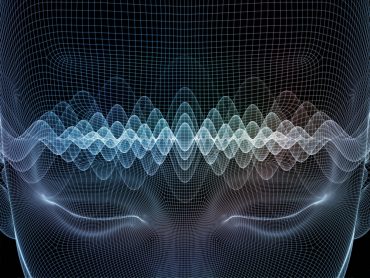
With AI on the edge, instead of bringing data to the algorithm, the algorithm is going to the data and enabling a whole new level of insights.
Artificial Intelligence (AI) is everywhere today, enabling organizations to predict the likelihood of a system outage, propel self-driving cars, and empower chatbots or virtual assistants with language capabilities. These types of AI use cases have primarily relied on centralized, cloud-based AI, where massive training data sets are housed. There’s a growing shift, however, toward bringing AI closer to the source or closer to the edge. Edge computing, where a range of networks and devices are housed in the world, and data is processed closer to where it’s being generated, is made actionable when supported by AI.
There’s a great need for this type of intelligence at the source, thanks to the sheer volume of data accumulated through the Internet of Things (IoT). IoT devices, such as sensors, devices, or wearables, collect and exchange data over the Internet and are often embedded into other IoT devices to provide a network of communication. For example, an IoT device worn by a warehouse employee can notify management if they have a fall and also signal an alarm to 911. An IoT device on a refrigerator can alert a homeowner when milk is running low or signal to a biotech scientist if an agitator is due for maintenance.
In these and other scenarios, AI on the edge plays a major role in leveraging all that data to develop actionable insights, take corrective action, or provide safety. AI on the edge allows computations to be done close to where data is actually collected rather than at a centralized cloud computing facility or an offsite data center. AI on the edge challenges the capabilities of the cloud when urgency and timing are crucial. For example, in a self-driving car, data is being captured in real-time, yet the car is speeding along at 65 miles per hour. There’s no time for the data to be sent to the cloud and then come back with a decision. The decision has to be made immediately.
See also: Explosive Growth in the Global Edge Computing Market Forecasted
Edge benefits abound
Consider some of the following key benefits:
Real-time Decision Making: AI on the edge can help devices make critical decisions without the latency associated with cloud-based processing. For example, self-driving cars can react swiftly to changing road conditions, ensuring passenger safety.
Privacy and Security: Edge computing offers security advantages as well. Data traveling from the location to the cloud can be hacked between locations, yet when the data is processed locally on the edge, there is no need for data to move through the network. This can be particularly crucial in applications like video surveillance cameras, where user privacy is paramount.
Limited Connectivity: In remote areas or places with unreliable internet connections, edge AI can function independently, providing uninterrupted services. This is beneficial in farm regions, where drones equipped with edge AI can monitor crops and livestock in areas with limited connectivity.
Lower Costs: AI on the edge reduces the need for large-scale and costly cloud infrastructure. Businesses can save on data transfer costs and access data immediately, enhancing efficiency.
Scalability: Edge AI is highly scalable, allowing additional devices to be easily added to an edge computing network without overloading central cloud servers.
Reliability: By distributing AI across multiple devices or nodes, AI on the edge is more resilient. Even if one device fails, others can continue to operate independently, reducing the risk of system-wide failures.
Safety: In addition to the safety benefits of wearable IoT devices mentioned above, AI on the edge avoids the physical safety hazards of analysts collecting data manually. Take, for example, someone sent to analyze the structural integrity of a building impacted by a natural disaster. When the inspection process is done autonomously, they’re able to analyze data in real time, within the safety of an office on the other side of the world.
See also: The Future is on the Edge, Survey Predicts
Challenges of Living on the Edge
Despite the many benefits of extending AI out to the edge, it does not come without limitations. One such challenge is its limited computational resources. Edge devices have limited computational power compared to data centers. This can pose constraints on the complexity of AI models that need to be run on them.
Additionally, edge devices are often battery-powered, and AI models often require a lot of power and can quickly drain battery life. Yet, researchers are developing lightweight AI models and algorithms optimized for edge devices. These models strike a balance between accuracy and resource consumption, making edge AI more feasible.
Another challenge is that while AI on the Edge reduces the risk of data breaches, it can cause data privacy concerns at the local level and be seen as intrusive.
Despite the challenges, AI on the Edge is poised for significant growth and innovation. In fact, according to Future Market Insights (FMI), the edge AI market is projected to expand at a compounded annual growth rate of 20.8 percent during the 2022 through 2023 period.
The rollout of 5G networks, the most recent generation of wireless network connectivity, will contribute to the rise of AI on the Edge, providing faster and more reliable connectivity to edge devices. One such use case is in warehouses or industrial settings, which typically have relied on Wi-Fi. They’re now able to set up a private, local 5G network to connect many devices and IoT sensors spread out across the site.
AI on the Edge provides one more alternative to how data is collected and analyzed. Its reduced latency, data privacy, and cost-efficiency are enabling a new level of intelligence across many industries. Instead of bringing data to the algorithm, the algorithm is going to the data and enabling a whole new level of insights.




























